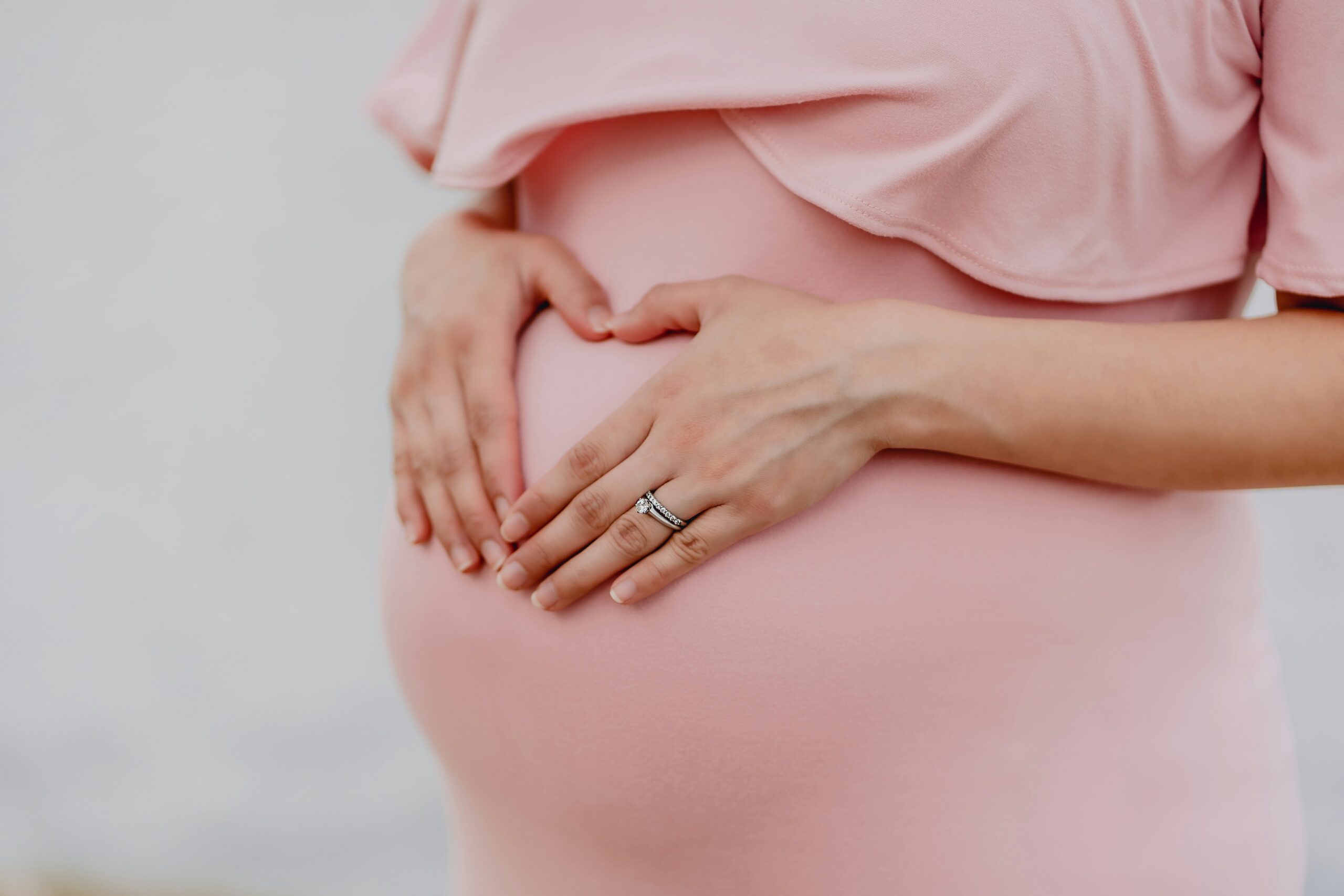Maternity Leave: A Guide for Employees
If you’re pregnant, you may have questions about maternity leave and associated rights – Our team of employment law specialists can answer your questions, ensure your rights aren’t being breached and advise how you can proceed
Read our guide on maternity leave below

Statutory Maternity Leave – What is it?
This comprises the time an employee can take off following the birth of their baby. An employee’s length of service doesn’t affect their maternity allowance, and once they’ve given birth, they are entitled to a maximum of 52 weeks off.
Compulsory Maternity Leave
This period represents the first two weeks (or four weeks for factory workers) after an employee has given birth. Once a child is born, the mother must take this time off. They cannot return to work until such time has passed.
Ordinary Maternity Leave (OML)
This refers to the first six months (26 weeks) of pregnancy leave following the birth of a child. Employees who return to work during this period are entitled to return to the job they previously held.
Additional Maternity Leave (AML)
This comprises the final six months (26 weeks) of an employee’s entitled leave after giving birth. If the job they previously held is available, the individual is entitled to return to it upon their return. However, if their role is no longer available, a similar role must be offered, with the same pay and conditions enjoyed previously.
Am I Eligible to take Maternity?
Although an employee’s length of service doesn’t affect their eligibility to take leave after giving birth, other factors do. First, the individual must be legally classified as an employee, not a worker. Furthermore, the employee must provide their employer with the correct notice.
When Do I Inform My Employer?
To ensure an employee is eligible to take maternity leave, they must give the correct notice to their employer. This involves notifying the employer of the due date and when the employee wants to begin their leave. Employees must provide this information to their employer at least 15 weeks before the baby’s due date.
What is the Start Date for my Maternity Leave?
Pregnancy leave can begin up to 11 weeks before the expected week of childbirth. Should the baby be born prematurely, such leave will start the following day.
Can I Change the Dates of My Maternity Leave?
Life comes fast, and plans can change. To accommodate this, employees have the right to change the dates of their pregnancy leave. However, they must provide the correct notice to make such changes.
If an employee wants to change the start of their entitled leave, they must provide their employer with 28 days’ notice from the original or new date, whichever is earliest. They should give eight weeks’ notice if they want to change the date of their return to work.
What Are My Rights During Maternity Leave?
An employee’s maternity rights at work are largely the same as their regular entitlements before going on leave. This means, among other things, they will still:
- Be protected from unfair dismissal
- Receive pension contributions
- Benefit from staff perks like medical insurance
However, their pregnancy rights at work won’t entitle them to the same remuneration they would’ve received before their leave. This doesn’t mean the employee won’t receive some form of payment, but they won’t obtain their regular salary.
Is My Leave Entitlement Affected?
An employee’s annual leave accrual won’t change while on maternity leave. This means they will still build up their usual holiday allowance, including bank holidays. It is important to note, though, that holidays cannot be taken, nor can holiday pay be received during such leave. Despite this, they can be booked around it.
Statutory Maternity Pay – Rules and Eligibility
Employees may be entitled to pay as part of their maternity plan. Statutory maternity pay (SMP) is the minimum amount employers can legally pay eligible employees on pregnancy leave.
To be eligible for SMP, an employee must:
- Earn, on average, a minimum of £123 weekly
- Provide their employer with at least 28 days’ notice of when they would like their SMP to begin
- Prove they’re pregnant within 21 days of the SMP start date by either providing a doctor/midwife’s letter or a MATB1 certificate
- Have worked a minimum of 26 weeks continuously for their employer upon reaching the 15th week before the baby is due
How Much Maternity Pay Can I Get?
Eligible employees will receive 90% of their average gross weekly earnings for the first six weeks. Subsequently, they will get £172.48 or the same as they did in the first six weeks, whichever is lower, for the following 33 weeks.
Please remember that the amount payable will be subject to tax and national insurance deductions. It will also be paid at the same rate, for example, weekly or monthly, as the employee’s regular wages.
When Does the Pay Period Start and End?
Generally, SMP commences at the same time as an employee’s pregnancy leave. However, it begins automatically if the employee is off work because of a pregnancy-related illness within four weeks of the week the baby is due. Once SMP has started, the employee will receive payment for a total of 39 weeks.
I am Not Entitled to Statutory Maternity Pay – What Are My Options?
Should an employee be ineligible for the above maternity leave payments, they may be able to receive maternity allowance. Individuals could be eligible for this if:
- They‘ve been employed for a minimum of 26 weeks in the 66 weeks before the baby’s due date
- They’ve earned at least £30 a week in a minimum of any 13 weeks of their employment
Eligible employees would receive £172.48 or 90% of their average weekly earnings, whichever is lower, every two or four weeks. Like SMP, this would be paid for a maximum of 39 weeks. Yet, this would be paid by the government rather than the employer and is tax-free.
Individuals can apply for maternity allowance after they’ve been pregnant for 26 weeks. If the application is successful, payment can begin within 11 weeks from when the baby is due. The government provide more information about how to claim.
Enhanced Maternity Pay vs Statutory Maternity Pay
Also known as “contractual maternity pay”, this is remuneration an employer may provide in addition to the statutory obligated figure. Typically, it is written into an individual’s contract of employment as part of the benefits of their maternity plan. However, if the employee doesn’t return to work following their pregnancy, they may have to pay the additional money back.
Keeping in Touch (KIT) Days – What Are Those?
Whilst on pregnancy leave, employees should receive updates concerning work changes, promotion opportunities and job vacancies. They should also be invited to work events, like training or seasonal parties, to ensure they don’t feel excluded.
Keeping in touch (KIT) days are another great way to ensure employees on maternity leave don’t feel forgotten. These optional days allow employees to undertake work they’d typically complete as part of their employment contract. Before an employee’s leave commences, it’s wise to discuss whether they’d like KIT days, determining the amount and scope.
Will I be Paid for KIT Days?
Employees who complete a KIT Day will be paid for their time. The employee and their employer must agree in advance on the remuneration. Typically, KIT days are paid at an employee’s regular daily pay, but this could vary depending on the work undertaken.
Despite this, the figure must stay above the national minimum wage. Moreover, if the employer pays less than they normally would to complete the same thing, this could amount to discrimination.
Will My Maternity Pay Be Affected If I Use a KIT Day?
Employees can work up to 10 KIT days while on maternity leave without affecting their SMP. These can be used at any time except during compulsory leave. Any additional days worked will result in the loss of SMP for any weeks where extra KIT days took place.
Can I Be Made Redundant During Maternity Leave?
Employees can be made redundant during such leave. Despite this, employees are afforded special consideration from the moment they become pregnant to the end of their pregnancy leave. This timeframe is called the ‘protected period’ and prevents such individuals from discrimination.
Therefore, to make an employee redundant during their maternity leave, an employer must follow a fair, legally compliant process. This includes the employer ensuring:
- The redundancy is necessary and genuine – i.e., not simply in place to remove the pregnant employee.
- They consult all employees, including those on such leave, about the redundancy process. During the consultation, they must discuss the reasons for the process, the selection criteria for redundancy, and any alternatives.
- Their redundancy selection process is transparent, non-discriminatory, objective and measurable. The criteria mustn’t disadvantage someone due to sex, pregnancy or maternity leave and could include factors like qualifications or performance.
- They consider suitable alternative roles for redundant employees, prioritising those on pregnancy leave first. By law, suitable roles can’t be in a worse location, comprise inferior terms and conditions or be outside the employee’s capacity.
I Was Dismissed During Maternity Leave – What Are My Rights?
Similar to redundancy, an employee can be dismissed during such leave. However, there must be a fair reason to do so, unrelated to the employee’s pregnancy or maternity leave. Furthermore, the employer must follow a fair process during the dismissal. Failure to comply with the above could amount to discrimination and unfair dismissal, leading to claims for compensation.
Returning to Work After Maternity Leave
Employees who return to work within six months of their leave (OML) have the right to return to their previous role. Should they return after the first six months (AML), they can return to their previous role if it’s still available. However, a similar role with the same pay and conditions must be offered if the role is no longer available.
How Can I Take More Time Off Once Maternity Leave is Over?
As mentioned, an employee’s annual leave entitlement still accrues when they have maternity cover. Employees who want additional time off after their pregnancy leave could utilise their holidays. This would have to be discussed and arranged with their employer.
If you have any questions or believe you’ve experienced maternity leave discrimination, contact Redmans Solicitors now. We are employment law specialists and can assess your circumstances before advising you on your possible next steps. To begin your journey with us today:
- Call us on 020 3397 3603
- Complete our online form to request a callback
